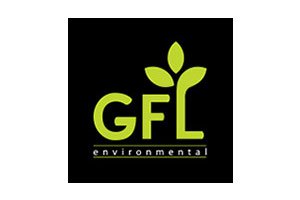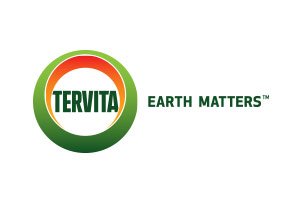
Expert Commercial Vehicle Inspections at Coppertop Truck Repair
Did you know that annually, over 2 million commercial vehicles are involved in accidents due to maintenance issues? Ensuring the safety and compliance of commercial vehicles is paramount. Commercial vehicle inspections play a crucial role in preventing accidents, reducing downtime, and avoiding costly fines. By conducting regular inspections, businesses can maintain their fleet's reliability and safeguard drivers and other road users. Stay ahead of potential risks by prioritizing thorough and consistent commercial vehicle inspections. In this post, we will delve into the importance of these inspections, key benefits they offer, and how they contribute to overall operational efficiency.
Key Takeaways
-
Prioritize Understanding: Familiarize yourself with the key inspection criteria and types of commercial vehicles to prepare effectively.
-
Utilize Inspection Resources: Make use of inspection guides and resources to ensure compliance and thoroughness during inspections.
-
Stay Informed on Legislation: Keep up-to-date with legislation and compliance requirements to avoid penalties and maintain safety standards.
-
Prepare Adequately: Before an inspection, take proactive steps to ensure your commercial vehicle meets all necessary standards.
-
Leverage Inspection Services: Reach out to inspection facilities and locations for guidance and support in navigating the inspection process.
-
Take Action: Act on the insights gained from this article to streamline your commercial vehicle inspection process effectively.
Understanding Commercial Vehicle Inspections
Basics of Inspections

Commercial vehicle inspections serve to ensure vehicle safety and compliance with regulations. Inspections are conducted by certified inspectors at designated inspection stations. These inspections typically take place at checkpoints or service centers.
Inspections play a crucial role in identifying and addressing potential safety hazards in commercial vehicles. Certified inspectors, trained to assess vehicle conditions, conduct these inspections at designated locations such as checkpoints or service centers.
Importance for Safety
Inspections are vital for maintaining road safety, preventing accidents, and ensuring the overall safety of commercial vehicles. Regular inspections help detect issues early, reducing the risk of accidents on the road.
Regular commercial vehicle inspections are essential for preventing accidents and ensuring road safety. By identifying and addressing potential issues promptly, these inspections contribute significantly to enhancing the overall safety of commercial vehicles.
Compliance with Regulations
Commercial vehicle inspections are not just about safety but also about complying with legal requirements. Non-compliance with inspection regulations can lead to fines, penalties, or even suspension of operating licenses.
Adhering to specific regulations is mandatory for commercial vehicle operators during inspections. Failure to comply with these regulations can result in severe consequences such as fines, penalties, or suspension of operating licenses.
Key Inspection Criteria
Vehicle Standards
Commercial vehicles are required to meet specific safety and operational standards set by regulatory bodies. These standards cover aspects like brakes, lights, tires, and emission levels. Vehicle standards are determined based on in-depth research, industry best practices, and safety regulations. They are enforced through regular inspections to ensure compliance. Adhering to these standards is crucial for maintaining the safety of drivers, passengers, and other road users.
Safety Checks
During commercial vehicle inspections, various safety checks are conducted to identify potential hazards and ensure compliance with regulations. These checks typically include examining brake systems, steering mechanisms, lighting, tire condition, and load securement. Safety checks are vital for preventing accidents, reducing breakdowns, and ensuring that vehicles operate safely on the roads. Examples of safety issues that can be identified through checks include worn-out brake pads, malfunctioning lights, or improperly secured cargo.
Inspection Procedures
Commercial vehicle inspections follow a systematic process to assess the overall condition of the vehicle thoroughly. The inspection begins with verifying essential documents such as registration papers and insurance certificates. Inspectors then proceed to examine critical components like brakes, suspension systems, exhaust emissions, and structural integrity. The key components of a thorough inspection procedure include checking for leaks, testing electrical systems, inspecting tire tread depth, and verifying proper functioning of safety features like seat belts.
Types of Commercial Vehicles
Public Buses
Public buses undergo regular inspections to ensure passenger safety and vehicle reliability. Inspections focus on brakes, lights, tires, and emergency exits. These checks are more stringent than those for other commercial vehicles due to the high number of passengers they carry. Safety considerations include emergency evacuation procedures and proper functioning of onboard safety equipment.
School Buses
School buses have strict inspection protocols to safeguard children's well-being during transportation. Inspections cover mechanical components, emergency exits, and seat belts. Stringent inspections are vital for school buses due to the vulnerable nature of young passengers. Special safety features like flashing lights, stop signs, and crossing arms are required for enhanced student protection.
Taxis and Ambulances
Taxis and ambulances must adhere to specific inspection criteria focusing on vehicle cleanliness, meter accuracy, and emergency equipment functionality. Inspections for these vehicles are crucial as they directly impact public safety during emergencies. Regulations mandate that taxis maintain clean interiors, functional meters, and appropriate insurance coverage. Ambulances must meet strict standards for medical equipment readiness and response efficiency.
Inspection Programs Overview
Program Goals
Commercial vehicle inspection programs aim to enhance road safety by ensuring that vehicles meet specific safety standards. These programs focus on preventing accidents caused by faulty equipment or unsafe vehicles. By conducting thorough inspections, the program aims to reduce the risk of accidents and protect both drivers and other road users.
The overarching goal of commercial vehicle inspection programs is to improve overall transportation safety. By identifying and addressing potential safety hazards in commercial vehicles, these programs contribute to reducing accidents and fatalities on the roads. Achieving this goal requires a comprehensive approach that involves regular inspections and strict enforcement of safety regulations.
Commercial vehicle inspection programs seek to increase compliance with safety regulations among commercial vehicle operators. By holding operators accountable for maintaining safe vehicles, these programs promote a culture of safety within the industry. This not only benefits individual drivers but also contributes to creating a safer environment for all road users.
Participant Requirements
To participate in commercial vehicle inspections, individuals must meet certain qualifications based on their role in the process. Inspectors responsible for evaluating vehicles are typically required to have relevant training and certification in commercial vehicle safety standards. This ensures that they have the necessary expertise to identify potential safety issues accurately.
Participants in commercial vehicle inspections must adhere to specific responsibilities during the inspection process. This includes cooperating with inspectors, providing accurate information about the vehicle's maintenance history, and ensuring that any identified issues are promptly addressed. Compliance with these responsibilities is crucial for maintaining the integrity of the inspection process.
Moreover, participants involved in commercial vehicle inspections may be required to undergo regular training or recertification to stay updated on evolving safety standards and inspection procedures. This ongoing training helps participants enhance their knowledge and skills, enabling them to perform inspections effectively and contribute to overall road safety.
Inspection Guides and Resources
Finding Guides
Finding resources for commercial vehicle inspections is crucial for maintaining safety standards. Inspection guides can be obtained from official government websites, such as the Department of Transportation (DOT) or the Federal Motor Carrier Safety Administration (FMCSA). These guides outline specific criteria and checkpoints to ensure comprehensive inspections. Utilizing finding guides effectively is essential for thorough inspections, as they provide detailed instructions on what to look for during the inspection process.
Inspectors must understand the significance of using finding guides to guarantee that no critical aspect of the inspection is overlooked. By referring to these guides, inspectors can systematically check each component of a commercial vehicle, including brakes, lights, tires, and overall structural integrity. Finding guides play a pivotal role in ensuring that inspections are conducted with precision and adherence to safety regulations.
Using Guides Effectively
To make the most out of inspection guides, inspectors should familiarize themselves with the layout and content of the guides beforehand. Following step-by-step instructions outlined in these guides can significantly improve the accuracy and efficiency of inspections. Utilizing guides effectively not only enhances the quality of inspections but also reduces the risk of missing crucial safety issues.
One key benefit of using inspection guides is that they provide a standardized approach to conducting inspections across different vehicles and inspectors. By following a consistent set of guidelines, inspectors can maintain uniformity in their inspection processes and outcomes. For instance, a guide may specify how to inspect brake systems on various types of commercial vehicles, helping inspectors streamline their evaluation process. Guides can streamline inspections by offering clear directives on what aspects need attention and how to address any identified issues promptly.
Inspection Facilities and Locations
Certified Facilities

Certified facilities play a crucial role in ensuring the safety and compliance of commercial vehicles. Choosing certified facilities guarantees that inspections are conducted by trained professionals following strict guidelines. These facilities must meet specific criteria to obtain certification, including having qualified inspectors and up-to-date equipment.
-
Significance: Inspections at certified facilities provide assurance that vehicles meet regulatory standards, reducing the risk of accidents and ensuring road safety.
-
Requirements: To become certified, facilities must undergo rigorous training and demonstrate proficiency in conducting thorough inspections.
-
Advantages: Opting for certified facilities offers peace of mind to vehicle owners, knowing that their vehicles are being inspected with precision and accuracy.
Location Guide
Navigating the locations where commercial vehicle inspections are conducted is essential for owners seeking compliance. Understanding the location guide helps streamline the inspection process, saving time and resources. Inspection locations are strategically positioned for accessibility and convenience.
-
Inspection locations are typically situated near major highways or transportation hubs for easy access by commercial vehicle owners.
-
Vehicle owners can utilize online platforms or contact local authorities to find nearby inspection sites based on their routes.
-
Familiarizing oneself with different inspection locations enables owners to plan their journeys efficiently, incorporating necessary stops for inspections along the way.
Legislation and Compliance
Current Regulations
Commercial vehicle inspections are subject to ongoing regulations that dictate safety standards. The Federal Motor Carrier Safety Administration (FMCSA) enforces these regulations. Inspections must comply with the Code of Federal Regulations (CFR) Title 49, Section 396.
The most recent update in inspection regulations is the implementation of the Electronic Logging Device (ELD) mandate. This mandate requires commercial vehicles to use ELDs to track hours of service accurately. Staying informed about these changes is crucial for ensuring compliance during inspections.
Compliance Tips
To maintain compliance with inspection regulations, ensure regular training for drivers and maintenance staff. Conduct thorough pre-trip inspections and address any issues promptly. Utilize technology like fleet management software to streamline inspection processes.
Strategies for maintaining compliance include establishing a routine maintenance schedule for all vehicles. Keep detailed records of inspections and repairs to demonstrate compliance during audits. Regularly review and update your company's inspection policies to align with current regulations.
Common pitfalls to avoid when striving for compliance include neglecting regular maintenance checks, overlooking driver training on inspection procedures, and failing to document inspection results properly. By addressing these pitfalls proactively, companies can enhance their compliance efforts significantly.
Preparing for an Inspection
Checklist Overview
A commercial vehicle inspection checklist typically includes key items such as brakes, tires, lights, and signals. Following this checklist is crucial to ensuring compliance with safety regulations. By using a checklist, inspectors can systematically examine each component, leading to a comprehensive inspection process.
Inspectors rely on the checklist to verify the condition of critical components like brakes and tires. This systematic approach helps in identifying potential issues that could compromise vehicle safety. A thorough inspection is essential to maintain regulatory compliance and ensure the safety of both drivers and other road users.
-
Brakes: Check for wear and tear on brake pads and ensure proper functioning.
-
Tires: Inspect tire tread depth and look for signs of damage or uneven wear.
-
Lights: Verify all lights are working correctly, including headlights, taillights, and turn signals.
Common Issues
During inspections, common issues often include brake system failures, worn-out tires, and malfunctioning lights. These issues pose significant risks to road safety as they can lead to accidents or breakdowns. Addressing these problems promptly is crucial to maintaining a safe fleet of commercial vehicles.
Brake system failures can result from worn brake pads or faulty brake lines. Such issues can lead to decreased stopping power, increasing the risk of accidents. Worn-out tires are another common problem that can cause blowouts or loss of traction, especially in adverse weather conditions. Malfunctioning lights compromise visibility on the road, posing hazards to both the driver and other motorists.
-
Brake System Failures: Regularly inspect brake components and replace worn parts promptly.
-
Worn-Out Tires: Monitor tire condition regularly and replace tires that show signs of wear.
-
Malfunctioning Lights: Check lights before every trip and replace any bulbs that are not functioning properly.
Contacting Inspection Services
Scheduling Inspections

Regular commercial vehicle inspections are crucial for ensuring safety and compliance with regulations. Scheduling inspections at recommended intervals helps prevent breakdowns and accidents. Plan inspections based on mileage, hours of operation, and manufacturer guidelines.
Effective scheduling involves coordinating with inspection services in advance to secure a convenient time slot. By proactively arranging inspections, vehicle maintenance can be optimized, reducing unexpected downtime and costly repairs. Timely inspections also enhance road safety for drivers and other road users.
Questions to Ask
During a commercial vehicle inspection, it's essential to ask pertinent questions to gather detailed information about the vehicle's condition. Important questions to ask include inquiries about previous maintenance history, any recent repairs or modifications, and potential issues noticed by the driver.
Asking relevant questions not only demonstrates your commitment to maintaining a safe fleet but also helps inspectors identify potential problems more efficiently. Clear communication through asking questions can lead to a more thorough inspection process, ensuring that all aspects of the vehicle are thoroughly checked.
Summary
In understanding commercial vehicle inspections, you've learned about key criteria, types of vehicles, inspection programs, guides, facilities, legislation, and preparation. By familiarizing yourself with these aspects, you are better equipped to ensure compliance and safety in your commercial vehicle operations. Stay proactive in seeking out inspection services and resources to maintain the integrity of your vehicles and adhere to regulations effectively. Remember, preparation is key to passing inspections smoothly and swiftly. Take charge of your commercial vehicle inspections to uphold standards and keep your operations running seamlessly.
Frequently Asked Questions
What are Commercial Vehicle Inspections?
Commercial vehicle inspections are detailed examinations of vehicles used for business purposes to ensure they meet safety and regulatory standards set by authorities.
How can I Prepare for a Commercial Vehicle Inspection?
To prepare for a commercial vehicle inspection, make sure all required documentation is organized, conduct regular maintenance checks, and address any issues promptly to ensure compliance with regulations.
Where can I Find Inspection Facilities and Locations?
You can find commercial vehicle inspection facilities and locations by contacting local transportation departments, searching online directories, or consulting with industry associations for recommendations.
What Legislation Governs Commercial Vehicle Inspections?
Commercial vehicle inspections are governed by federal and state legislation that mandates specific safety standards and requirements to ensure the safe operation of commercial vehicles on public roads.
Why is Compliance with Commercial Vehicle Inspections Important?
Compliance with commercial vehicle inspections is crucial to maintaining the safety of drivers, passengers, and other road users. It helps prevent accidents, reduces liability risks, and ensures regulatory compliance for businesses.
Broken down near Edmonton? Here are Coppertop’s Top Resources in the area:
Edmonton Travel Hotels
Edmonton Things to Do
Edmonton Places to Eat
Edmonton Weather
Not what you were looking for? Coppertop Truck Repair also offers the following services:
Heavy Duty Truck Repair
Mobile Emergency Service Truck
Diesel Truck Repair Services


















